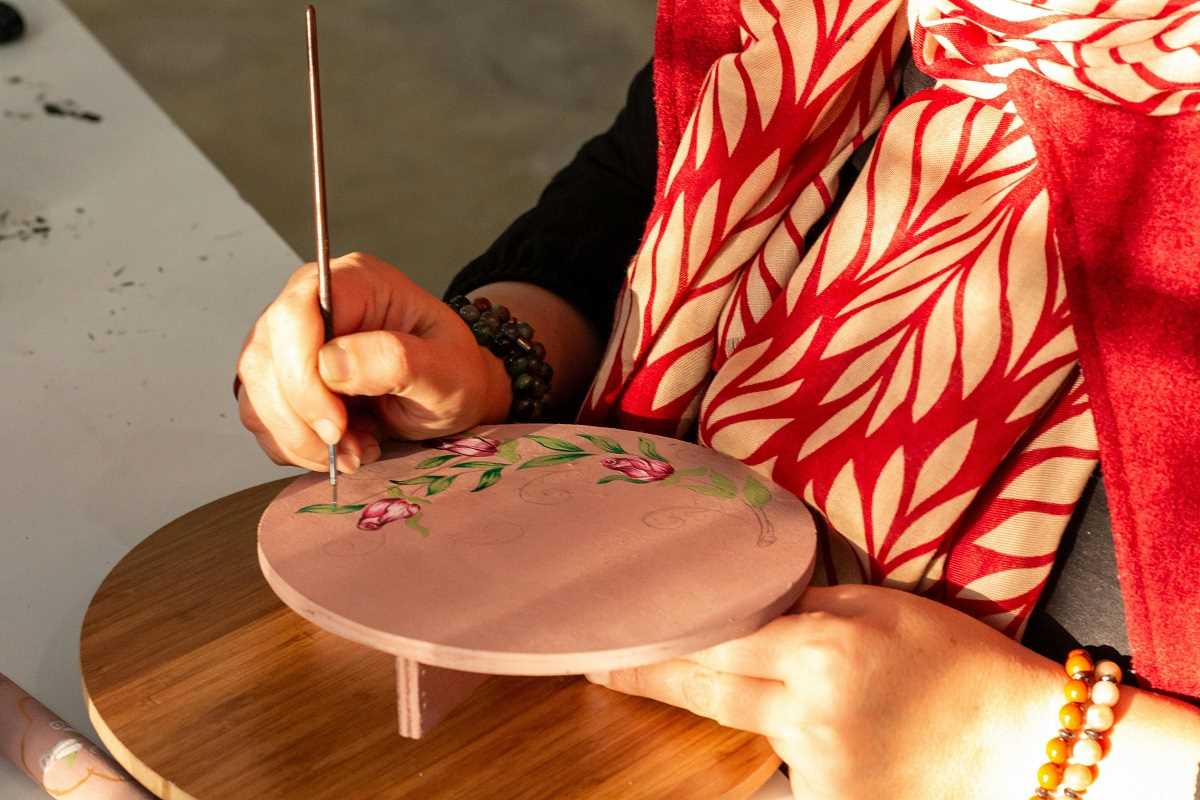Ancient artisan movement is more than a nostalgic nod to the past—it represents a conscious effort to preserve cultural heritage, embrace sustainable practices, and create unique, meaningful designs that stand apart in an era of uniformity. From pottery to weaving, metalworking to woodworking, ancient techniques are being revitalized and seamlessly integrated into contemporary aesthetics.
Let’s explore how this homage to traditional craftsmanship is reshaping the design landscape!
Ancient Pottery Techniques in Modern Ceramics
Pottery, one of humanity's oldest art forms, has been practiced for thousands of years. Civilizations like the Greeks, Egyptians, and Chinese not only used pottery for functional purposes but also elevated it to a medium of artistic expression. Today, modern ceramicists are rekindling these age-old techniques, bringing them into contemporary design.
Methods like hand-building, where clay is shaped without a potter’s wheel, and wheel-throwing, a technique requiring precision and skill, are experiencing a renaissance. Glazing techniques, inspired by ancient traditions, are also making a comeback, with artisans experimenting with earthy tones, crackle effects, and matte finishes.
The result is a collection of ceramics that feel both timeless and relevant, often blending the imperfection of handcrafting with modern design sensibilities. These pieces are not merely decorative; they evoke a sense of connection to the past, imbuing homes and spaces with warmth and authenticity.
Traditional Weaving Methods in Textile Design
Weaving, one of the most fundamental artisan skills, has been used for centuries to create textiles ranging from utilitarian fabrics to intricate tapestries. In a world where fast fashion and synthetic materials dominate, designers are increasingly turning to traditional weaving techniques to craft textiles that exude character and quality.
Hand-looming, a labor-intensive process requiring significant skill, allows weavers to create intricate patterns and textures that machines cannot replicate. Techniques like macramé, popularized in the 1970s, have re-emerged as a sophisticated art form in home décor, particularly in wall hangings, curtains, and plant hangers. Similarly, embroidery, with its roots in ancient civilizations, is being used to embellish clothing and home goods, adding a touch of artistry to otherwise simple items.
By embracing these traditional methods, modern textile designers infuse their creations with a depth and soul that mass-produced fabrics simply lack.
Ancient Metalworking Skills in Contemporary Jewelry
Metalworking has been a revered craft for millennia, with ancient civilizations producing ornate jewelry using complex techniques like filigree, granulation, and repoussé. These methods required precision and patience, resulting in pieces that were as much works of art as they were personal adornments.
Contemporary jewelry designers are now revisiting these ancient techniques, incorporating them into their collections to create heirloom-quality pieces. Filigree, for example, involves the delicate twisting of metal threads to form intricate patterns, while granulation uses tiny spheres of metal to add texture and detail. These skills, once at risk of being lost, are being kept alive by artisans who blend traditional craftsmanship with modern aesthetics. The result is jewelry that bridges the gap between past and present, offering a unique alternative to the mass-produced designs prevalent today.
Woodworking Traditions in Modern Furniture Design
Woodworking is one of humanity’s most ancient skills, used historically to create everything from tools to furniture. In today’s design world, traditional woodworking techniques are being revived to produce furniture that emphasizes durability, functionality, and artistry.
Joinery, a time-honored method of connecting wood without nails or screws, has become a hallmark of high-quality furniture. Techniques like carving and marquetry, which involve embedding decorative patterns into wood surfaces, are also enjoying renewed interest. These methods celebrate the natural beauty of wood, allowing its grain and texture to shine through.
Designers are combining these traditional techniques with minimalist and modern forms, resulting in pieces that are both visually striking and built to last. The resurgence of woodworking traditions is a testament to the enduring appeal of handcrafted furniture in a world often saturated with disposable alternatives.
Revival of Ancient Metal Casting Techniques in Sculpture
The art of metal casting dates back thousands of years, with ancient cultures perfecting methods such as lost-wax casting and sand casting. These techniques allowed artisans to create everything from functional tools to intricate sculptures. Today, modern sculptors are embracing these methods to produce works of art that are both contemporary and steeped in history.
Lost-wax casting, for example, involves creating a mold around a wax model, which is melted away to make room for molten metal. This technique, known for its precision, is being used to craft sculptures that range from abstract forms to realistic figures. Sand casting, another ancient method, allows for the creation of large-scale pieces with unique textures. By reviving these techniques, sculptors are reconnecting with the rich heritage of metalworking while pushing the boundaries of what is possible in modern design.
The Cultural Significance of Reviving Ancient Skills
The resurgence of ancient artisan techniques goes beyond aesthetics—it carries profound cultural and emotional significance.
These skills are often passed down through generations, embodying the stories, traditions, and values of their respective cultures. By incorporating them into modern design, artisans pay homage to their heritage while ensuring these practices are not forgotten.
For example, indigenous weaving techniques from regions like Central America and Southeast Asia are being celebrated in global fashion and interior design. Collaborations between designers and traditional artisans have become more common, fostering cross-cultural exchange and preserving endangered crafts. These partnerships often prioritize fair trade and sustainability, addressing the ethical concerns of modern consumers.
Sustainability and the Appeal of Handcrafted Design
In an age of environmental awareness, the revival of ancient artisan skills aligns with the growing demand for sustainable and ethically made products. Handcrafted items, by nature, involve fewer resources and produce less waste than mass production. Materials like clay, wood, and natural fibers are often locally sourced, further reducing the environmental footprint.
The focus on quality over quantity is another key aspect of this trend. Artisan-made pieces are designed to last, contrasting sharply with the disposable nature of many modern goods. Consumers increasingly value these attributes, seeking out items that tell a story and offer a personal connection.
Blending Tradition with Innovation
While the emphasis on traditional techniques is central to this movement, innovation plays an equally important role. Designers are not merely replicating the past—they are reimagining it. By combining ancient methods with modern tools and materials, artisans are creating designs that are both timeless and cutting-edge.
For instance, 3D printing is being used alongside traditional casting methods to create intricate molds for jewelry and sculpture. Similarly, digital design software helps weavers experiment with patterns and colors before beginning their work on a loom. This fusion of old and new ensures that traditional crafts remain relevant and accessible in the modern age.
The revival of ancient artisan skills in modern design is a powerful reminder of the value of craftsmanship in an increasingly mechanized world. By embracing these techniques, designers are not only preserving cultural heritage but also creating works that are meaningful, sustainable, and unique.
From pottery and weaving to metalworking and woodworking, these traditions offer a counterbalance to the disposable culture of mass production. They invite us to slow down, appreciate the artistry in everyday objects, and reconnect with the rich history of human creativity.
 (Image via
(Image via





